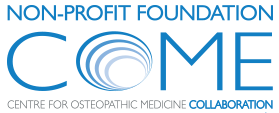An international consensus on gaps in mechanisms of forced-based manipulation research: findings from a nominal group technique
Force-Based Manipulation (FBM) including light touch, pressure, massage, mobilization, thrust manipulation, and needling techniques are utilized across several disciplines to provide clinical analgesia. These commonly used techniques demonstrate the ability to improve pain-related outcomes; however, mechanisms behind why analgesia occurs with these hands-on interventions has been understudied. Neurological, neuroimmune, biomechanical, neurovascular, neurotransmitter, and contextual factor interactions have been proposed to influence response; however, the specific relationships to clinical pain outcomes has not been well established. The purpose of this study was to identify gaps present within mechanism-based research as it relates to FBM. An international multidisciplinary nominal group technique (NGT) was performed and identified 37 proposed gaps across eight domains. Twenty-three of these gaps met consensus across domains supporting the complex multisystem mechanistic response to FBM. The strength of support for gaps within the biomechanical domain had less overall support than the others. Gaps assessing the influence of contextual factors had strong support as did those associating mechanisms with clinical outcomes (translational studies). The importance of literature investigating how FBM differs with individuals of different pain phenotypes (pain mechanism phenotypes and clinical phenotypes) was also presented aligning with other analgesic techniques trending toward patient-specific pain management (precision medicine) through the use of pain phenotyping … ABSTRACT







